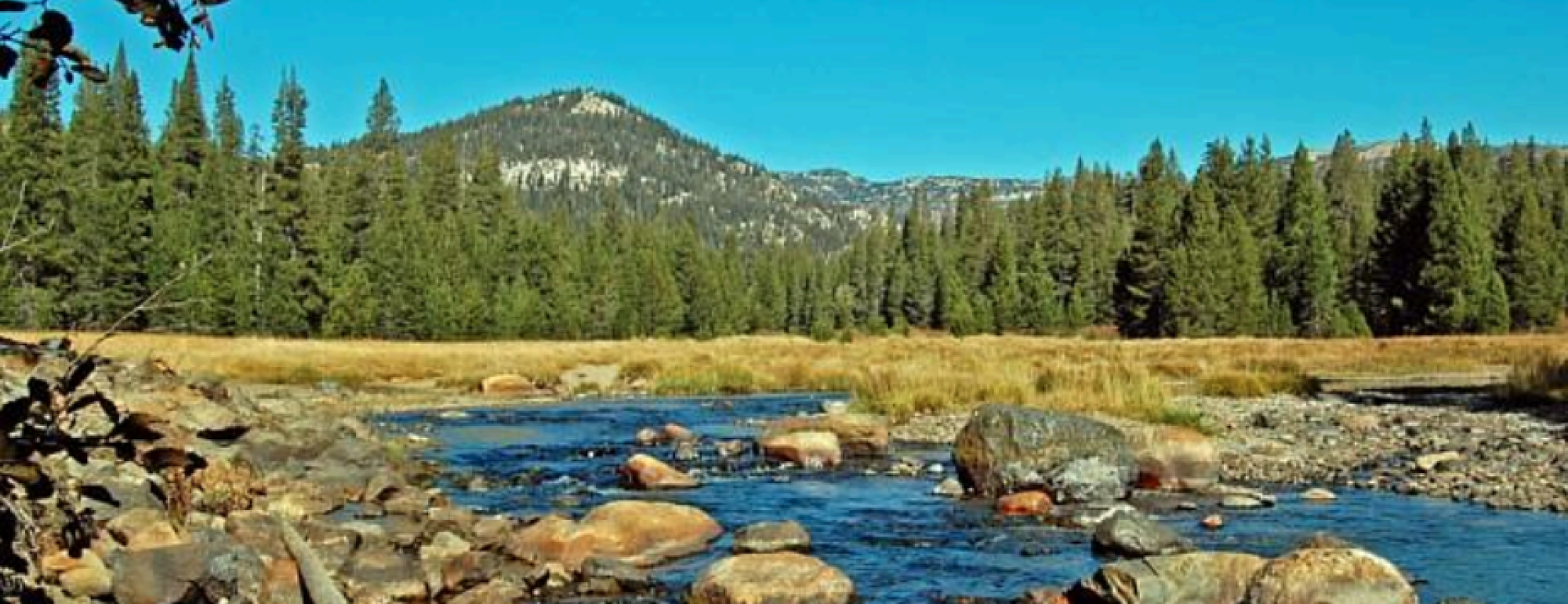Goals
This project aims to improve existing models of stream baseflow in California’s streams and rivers, and assess the sensitivity of native fish species to the natural variability of baseflows in systems with unimpaired and impaired flow regimes. Improving the body of scientific knowledge around the relationship between native fish and baseflow conditions will be key to informing management of freshwater environments to promote fish conservation and sustainability.
Background
Assessing the vulnerability of native fishes to dry- and wet-season baseflow alteration first requires an understanding of natural flow variation and the hydrologic processes that sustain baseflow. Predictions of natural, unimpaired flows provide a baseline from which to assess the degree of flow deviation under current or future conditions. Recently, such predictions of unimpaired flows have been developed as part of a coordinated statewide effort to improve environmental flow management, known as the California Environmental Flows Framework (CEFF) (ceff.ucdavis.edu). CEFF utilizes a Functional Flows approach (Stein et al. 2021). Functional Flow components are elements of the natural flow regime that are known to support important biophysical processes and promote conditions under which native species can flourish (Yarnell et al. 2015). Combined with information on flow requirements of native fish species, these data could be leveraged to explore potential relationships between native species and their vulnerability to changes in baseflow conditions resulting from water management activities and climate change.
Project Description
The current project achieved two primary goals: (1) increase the accuracy of CEFF models for predicting key functional flow components, including wet and dry season baseflows, and (2) accurately assess the sensitivity of native fish species to changes in stream baseflow.
We improved model accuracy through the incorporation of additional model predictors (local channel geomorphology, springs, soils, and catchment properties) of baseflow to better predict baseflow hydrology in ungauged and impaired systems. We developed models of baseflow metrics to accurately quantify minimum flows and the number of zero flow days. We also developed an intermittent stream classification incorporating these metrics to evaluated perenniality across California streams. Results are provided in the final study report below and in Ayers et al. 2024. (https://agupubs.onlinelibrary.wiley.com/doi/full/10.1029/2023WR035768)
Expanding on previous efforts by Obester et al. (2022), we systematically evaluated the life history requirements of native fish species relative to dry season baseflows. The California Department of Fish and Wildlife has collected long term and comprehensive fish monitoring data from a number of key streams throughout the state that we will analyze in order to develop and quantify fish-flow relationships. These analyses focused on how species composition (percent dominance, and percent native and non-native) and the life history, physiological, and morphological traits of fishes change over space and time in response to natural variation of the streamflow regime. Establishing quantitative relationships between baseflow conditions and fish life characteristics has the potential to be essential for sustainable management of fish populations and environmental flow conditions in streams throughout the state. Results are provided in the final study report below.
Lastly, we examined the response of the fish community in Putah Creek to changes in individual components of the flow regime known to support ecosystem functions (i.e. functional flow components as described in CEFF). We found that as functional flow components shifted towards their predicted natural range, the quasi-extinction risk (likelihood of population declines of > 80%) decreased for the native fish assemblage. These results are published in Baruch et al. 2024, Ecological Applications.
References:
California Environmental Flows Framework Technical Team (2021). The California Environmental Flows Framework. University of California, Davis. http://ceff.ucdavis.edu.
Moyle, P.B., J.V.E. Katz and R.M. Quiñones. 2011. Rapid decline of California’s native inland fishes: a status assessment. Biological Conservation 144: 2414-2423. https://doi.org/10.1016/j.biocon.2011.06.002.
Obester, A.N., Lusardi, R.A., Santos, N.R., Peek, R.A. & Yarnell, S.M. (2022). The use of umbrella fish species to provide a more comprehensive approach for freshwater conservation management. Aquatic Conservation: Marine and Freshwater Ecosystems, 32( 1), 112– 128. https://doi.org/10.1002/aqc.3746.
Stein, E.D., J. Zimmerman, S.M. Yarnell, B. Stanford, B. Lane, K.T. Taniguchi-Quan, A. Obester, T.E. Grantham, R.A. Lusardi, and S. Sandoval-Solis. (2021). The California Environmental Flows Framework: Meeting the Challenges of Developing a Large-Scale Environmental Flows Program. Frontiers in Environmental Science 9:769943. doi: 10.3389/fenvs.2021.769943.
Yarnell, S.M., G.E. Petts, J.C. Schmidt, A.A. Whipple, E.E. Beller, C.N. Dahm, … J.H. Viers. (2015). Functional Flows in Modified Riverscapes: Hydrographs, Habitats and Opportunities. BioScience, biv102. doi: 10.1093/biosci/biv102.

